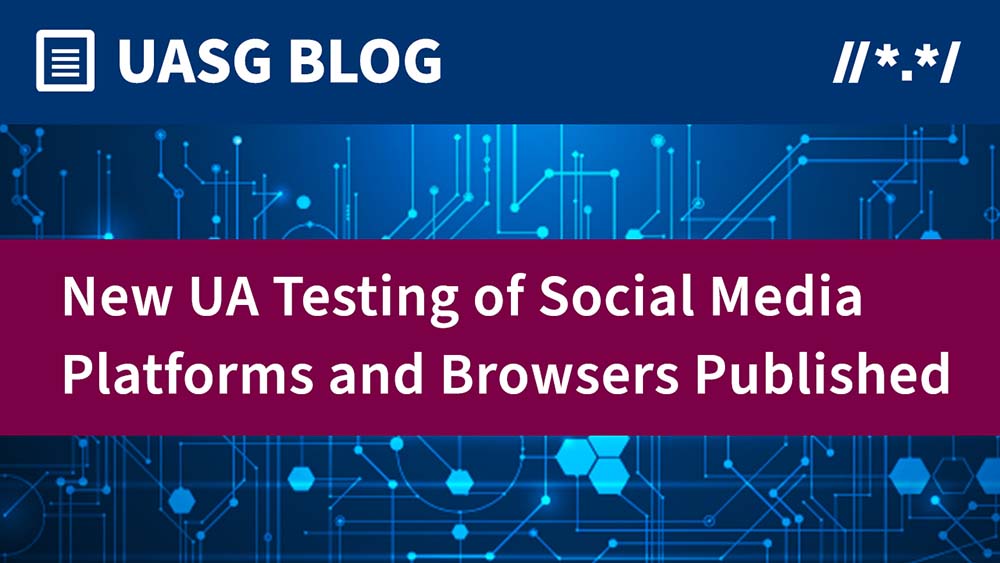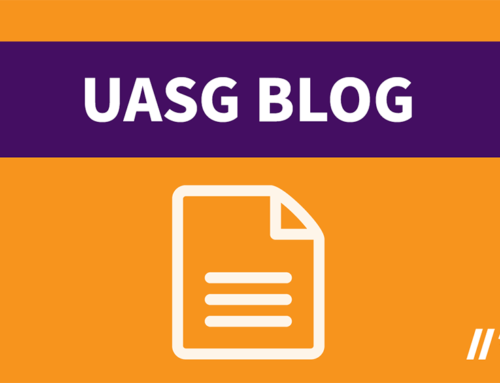By the UASG Measurement Working Group
Social Media Testing Highlights UA Gaps
Social media has become a ubiquitous part of life for people around the globe with more than half of the world’s population using a form of social media. But how accessible are social media platforms to people who prefer to use email addresses and domain names in their own language or script? If a social network is not Universal Acceptance (UA)-compliant, then individuals using new or long top-level domains (TLDs), as well as internationalized email addresses and domains in their languages, such as Arabic, Chinese, Hindi, Russian, and Thai may be excluded or have a sub-par experience.
In partnership with Oxford Information Labs (OXIL), the Universal Acceptance Steering Group (UASG) recently completed an evaluation to better understand which social networks are UA-ready, and which are primed for remediation efforts to update their systems to support a diverse and multilingual Internet. Overall, the testing showed that there is very little support for using an internationalized (non-ASCII) email address to register and authenticate a social media account. Of the 12 social media applications tested, none passed the test of registering an internationalized email address. However, good support was found for the proper display (i.e., posting) of international email addresses and Internationalized Domain Names (IDNs) in public posts and private messages. In this case, Telegram was the most UA-ready followed by LinkedIn, Facebook, and Twitter both on desktop and mobile operating systems.
Although progress in making social media platforms UA-ready has been slow, the UASG hopes that the results in this new report can help develop and guide remediation efforts. The technological gaps identified, along with further recommendations from the UASG, will be communicated to the relevant platforms and applications so that they can update their systems and better understand how their policies affect global end users.
More information on the testing objectives, process, and results is outlined in the full report: UASG035 – UA-Readiness of Social Media Platforms (Report and Presentation).
Updated Browser Testing Shows Significant UA Improvement
The UASG also published an updated version of its 2017 Universal Acceptance of Popular Browsers report. This 2022 version includes new testing of browser behaviors when it comes to bookmarking and adding favorites with the requirement that URLs listed should resolve to valid websites in all browsers and display the URL and “Title” of the webpage as an end user might expect on all platforms using just the default settings (i.e., no special language settings).
The overall test results showed a significant improvement in UA-readiness as most of the 19 domain names tested resolved to valid websites in all browsers and displayed the domain name and “Title” as an end user might expect. In 2017, only Internet Explorer on desktop performed completely as expected. However, with the addition of testing the validity of saving bookmarks and favorites, the results showed that although bookmarks could be saved successfully, they did not always display as an end user would expect. The Yandex browser showed the most UA-readiness of all the browsers tested, followed by Chrome, Firefox, Opera, and Edge.
The 2022 testing also revealed that there were more UA-related difficulties when it came to mobile device environments. The majority of the failed tests on mobile were tests confirming that the domain name displayed in the correct format and displayed correctly in the address bar.
The general outlook of UA-readiness within modern web browsers is largely positive with almost every tested browser handling the paste and subsequent navigation of all IDNs correctly, resulting in a perfectly usable browsing experience for sites hosted using IDNs. It was especially encouraging to note that the right-to-left scripts and other challenging tested scenarios, such as the use of the Chinese Open Dot, resulted in a valid resolution of the domain name in almost every instance.
More information on the testing objectives, process, and results is outlined in the full report: UASG036 – UA-Readiness of Browsers (Report and Presentation).
This testing has been based on test cases developed in UASG004. See also similar studies for email tools, programming languages and content management systems. For more information, please contact info@uasg.tech.
For more information about the UASG and ways you can get involved, visit https://uasg.tech/ and follow the UASG on social media (Twitter, Facebook, and LinkedIn).






